Crassula solieri (Gay) F. Meigen
Smooth-Seed Pygmyweed
Crassulaceae
[HOME]
Protologue: Bot. Jahrb. Syst. 17: 239 (1893)
Pronunciation: Crás-su-la so-li-é-ri
Etymology: L. crassus, thick, referring to the fleshy leaves + after French botanist Antoine J. J. Solier, 1792-1851
Jepson eFlora Treatment
Jepson eFlora Key to Crassula
SD County Synoptic Voucher
Distribution:
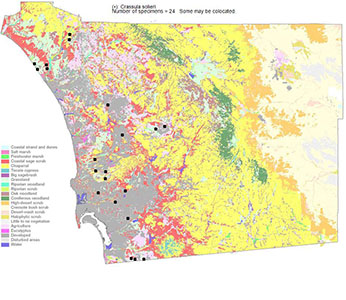
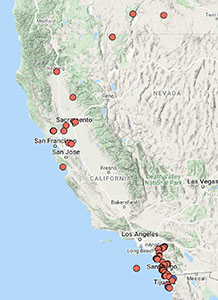
Left: S.D. County Plant Atlas (http://sdplantatlas.org). Right: CCH2. Click to see current herbarium records.
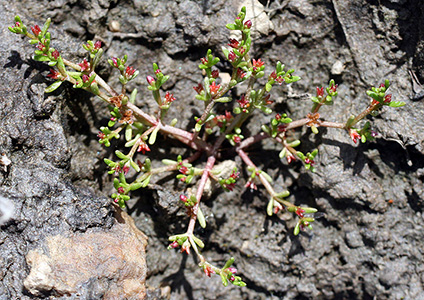
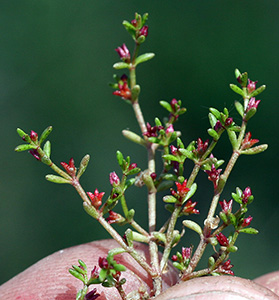
Crassula solieri
Whole plants, annual herbs.
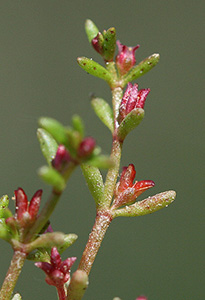
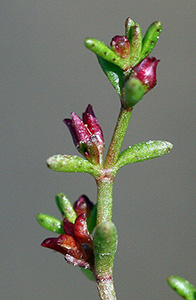
Crassula solieri
Flower close-up, showing one flower/fruit per node, 4-carpellate, apocarpous gynoecium.
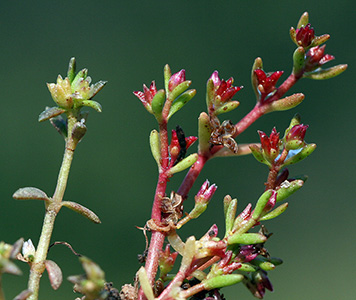
Comparison of Crassula aquatica (left) and Crassula solieri (right), the former a native species that can be found in vernal pools.
Crassula solieri has fruit units (follicles) that are more reddish and more recurved in the distal half. Seed surface and sepal length and shape also differs between the two.
All photographs courtesy of Dr. Jon Reman.
Key to the two species, from the Jepson eFlora:
| Seeds with ± regular, continuous, longitudinal lines at 20×, ± dull or shiny but not glistening as if wet; follicles subtruncate at tip, suture abruptly outcurved in distal 1/4; sepals 0.5–1.5 mm, ovate to oblong ..... C. aquatica Seeds with irregular, interrupted, longitudinal lines at 20×, shiny, glistening as if wet; follicles oblique-acute at tip, suture gradually outcurved in distal 1/2; sepals 0.4–1 mm, deltate-ovate to lanceolate ..... C. solieri |
|---|
| Cal Photos images | Google images |